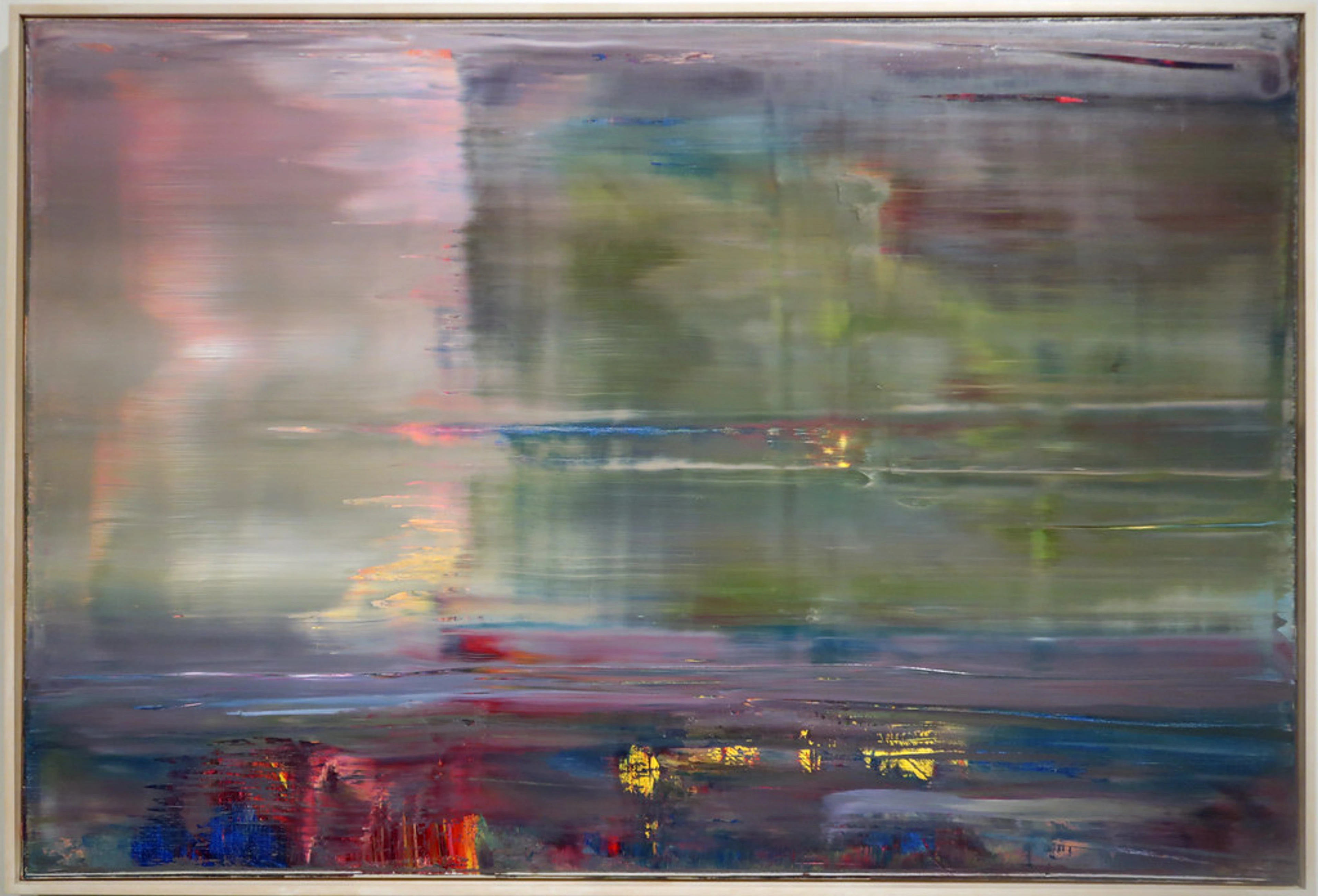
Abstract Art for Minimalist Homes: Adding Soul, Depth, and Clutter-Free Personality
Discover how abstract art transforms minimalist homes. Add soulful depth, vibrant personality, and a captivating focal point without clutter. Learn practical tips for choosing, displaying, and caring for your unique pieces, creating a serene and deeply personal sanctuary.
Abstract Art for Minimalist Homes: Soulful Depth, Zero Clutter
I used to think minimalism meant stark white walls, a single potted plant, and a distinct lack of personality. My own living space, at times, leaned into this extreme, largely because I was perpetually terrified of clutter. My brain, bless its chaotic heart, produces enough internal clutter, so my external world had to be as serene as a Zen garden, albeit one with a few more dust bunnies than intended.
But here's the funny thing about stark minimalism: it can feel a little... lonely. Like a perfectly clean plate with nothing on it. I remember one particularly quiet evening, staring at my impeccably tidy, yet strangely hollow, living room and realizing it felt less like a haven and more like a waiting room for a life that hadn't quite started. And that's where abstract art, paradoxically, becomes the secret sauce for modern minimalist homes. It's the soul without the stuff, the depth without the distraction. It’s what transforms a house into a home without turning it into a hoarding nightmare. Believe me, I've tried both. For me, a minimalist home isn't just about owning less; it's about creating a tranquil space where every object serves a purpose or evokes a feeling, a sanctuary that grounds you. This guide, born from my own journey, will show you how abstract art can be the very heart of your minimalist home, offering depth and personality without a single ounce of clutter.
The Minimalist Canvas: Why Abstract Art Works
At first glance, abstract art might seem counter-intuitive for a minimalist aesthetic. Minimalism champions clean lines, open spaces, and a 'less is more' philosophy. Abstract art, with its often vibrant colors and complex compositions, seems to scream 'more is more!' But trust me, there’s a beautiful dance happening here.
Less is More, But More Impactful
The beauty of abstract art in a minimalist setting lies in its non-representational nature. Unlike a landscape or a portrait, it doesn't demand you interpret a specific scene. Your mind is free to wander, to connect with the colors, forms, and textures on a purely emotional level. This aligns perfectly with minimalism's pursuit of essence, echoing the early 20th-century movements like Suprematism or De Stijl that stripped away external reality to explore pure form and emotion. For me, these movements aren't just art history; they're foundational principles. Suprematism's focus on pure geometric form, or De Stijl's reduction to primary colors and straight lines, teaches us that the most profound statements often come from the simplest elements. It’s about the power of the essential, which is exactly what I strive for in my own work when creating pieces for spaces that breathe. I often strip back to pure color fields or essential geometric shapes, aiming to evoke quiet contemplation or dynamic tension through subtle interplay, drawing directly from the lessons of these masters. It's like a good, quiet friend who just sits with you, offering comfort without demanding conversation. This is precisely why it aligns with the 'less is more' principle – it offers immense depth with minimal literal content. The deliberate use of negative space around a piece of abstract art in a minimalist setting enhances its impact, allowing the artwork to breathe and truly command attention. For more on this, you might enjoy my thoughts on art for minimalist interiors: less is more or the role of negative space in abstract art.
When considering abstract art for a minimalist home, certain types inherently lend themselves well. Geometric abstraction (think Mondrian) offers clean lines and structured forms that resonate with minimalist architecture. Color field painting provides expansive washes of color that can create immense emotional depth without demanding narrative interpretation. Lyrical abstraction or expressive pieces, while seemingly more chaotic, can offer a burst of unbridled emotion in a controlled environment, provided they are balanced – perhaps by letting them be the sole burst of color against a muted backdrop, or by ensuring surrounding elements are exceptionally restrained. Other styles like Minimalism itself also share this underlying philosophy, seeking impact through reduction and thoughtful arrangement.
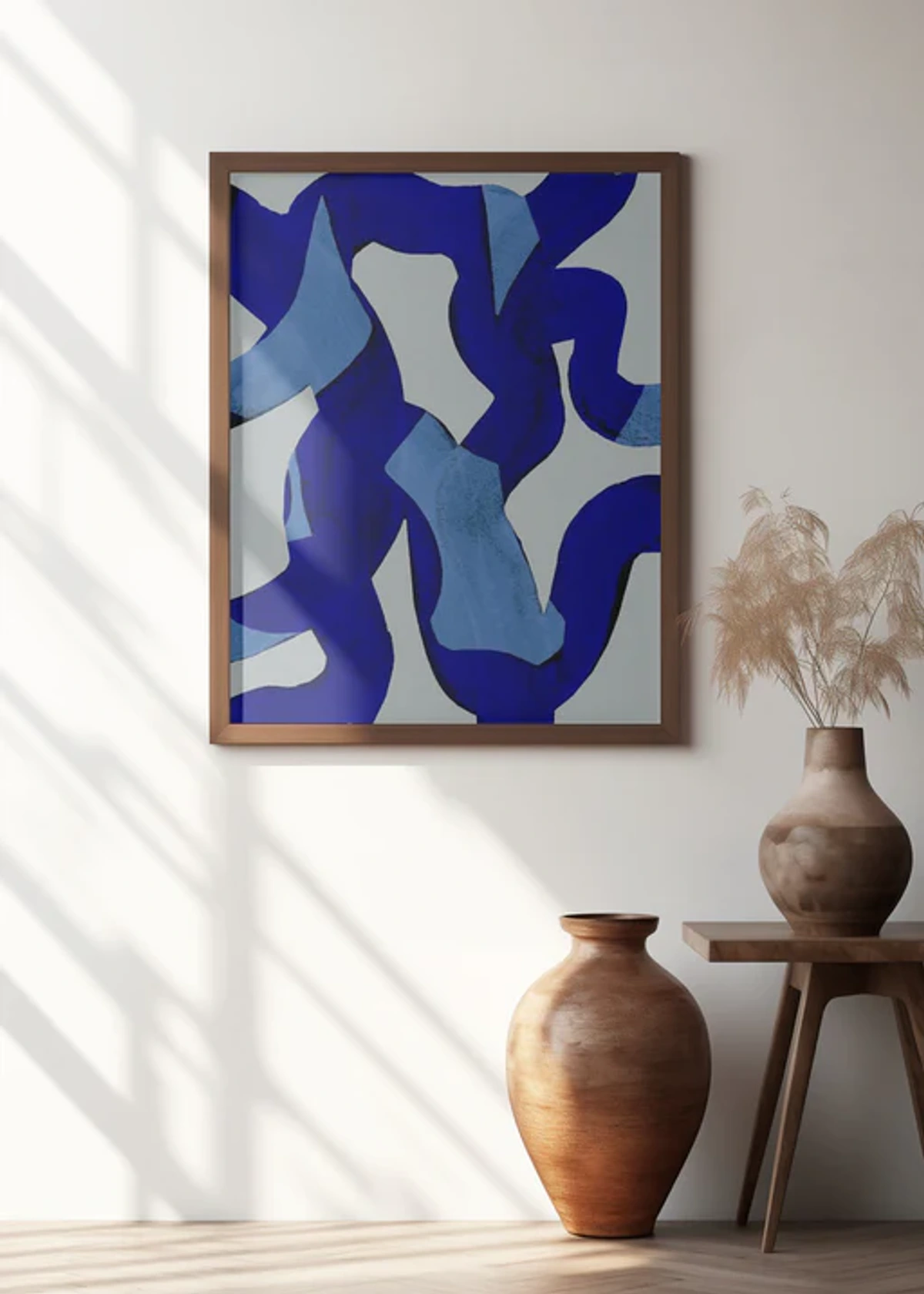
https://www.modernmemorydesign.com/collections/abstract-wall-art-for-home-decor, https://creativecommons.org/licenses/by-nc/4.0/
The Power of Suggestion
Abstract art speaks through color, shape, and composition, not through narrative. It suggests emotions, movements, and ideas without explicitly stating them. In a minimalist home, where visual noise is kept to a minimum, an abstract piece becomes a powerful focal point, a conversation starter for your soul, inviting your participation and making its meaning a co-creation between the piece and your current state of mind. I have one piece in my studio – a swirl of deep blues and subtle greens – that always suggests a vast, tranquil ocean to me, instantly bringing a sense of calm on hectic days. It's wonderfully fluid. If you're curious about how colors speak, delve into the emotional language of color in abstract art or learn about decoding abstract art: a guide to finding meaning in non-representational works.
Curating Your Visual Sanctuary: My Approach
Curating art for a minimalist home isn't just about picking a pretty picture; it's about intentionality. It's about deciding what feeling you want to cultivate in your space. For me, it's about finding pieces that resonate, that offer a moment of quiet reflection or a burst of energy, without overwhelming the serene backdrop.
Finding Your Art: The Intuitive Search
Acquiring abstract art for your minimalist space is a personal journey, far beyond just matching decor. It’s about trusting your intuition and finding a piece that truly speaks to your soul, becoming a timeless investment in your home's emotional landscape. I often advise people to visit local galleries, explore artists' studios, or even connect directly with artists online. Don't be afraid to spend time with a piece, letting its colors and forms resonate before committing. Before committing, consider the scale of your space. Use painter's tape to mock up the dimensions on your wall, or leverage online 'view in room' features to visualize how a piece will truly feel in your home. The most profound art often finds you when you're open to the connection.
Color as a Whisper, Not a Shout
When I'm creating for or considering a minimalist space, my choice of palette becomes crucial. Sometimes, a vibrant splash of color, like a bold red or deep blue, acts as a dynamic counterpoint to neutral tones. Other times, I lean into subtle, earthy hues or monochromatic schemes that add texture and depth without competing for attention. It’s about balance. I often find myself drawn to a limited palette in my own abstract works for minimalist spaces, focusing on a few select hues to create subtle shifts and deep, nuanced conversations, rather than overwhelming the eye. My aim is to create visual comfort and intrigue.
I once tried to incorporate a huge, multi-colored abstract piece into a very zen, muted living room. It screamed, I whispered. The piece was beautiful, but it fought the room's energy like a toddler on a sugar rush. It taught me that while bold is good, balance is paramount. Think of it as seasoning a dish – just enough to enhance, not overpower.
Different color families evoke distinct psychological responses. Warm colors (reds, oranges, yellows) can inject energy and vibrancy, while cool colors (blues, greens, purples) tend to promote calm and serenity. Muted tones or monochromatic schemes enhance quiet sophistication, allowing focus on texture and form. Understanding this allows for strategic color choices. As you envision your own living room, consider what emotional landscape you wish to cultivate with your chosen palette.
My own journey with color is something I explore in the power of color in abstract art: my approach to palette and emotion.
Strategy | Goal | Color Approach |
|---|---|---|
| Blending | Create seamless harmony | Muted tones, subtle gradients, monochromatic schemes (e.g., grays, whites, browns) |
| Focal Point | Add dynamic contrast & energy | Single bold color, dynamic interplay of complementary colors (e.g., a vibrant blue in a neutral room) |
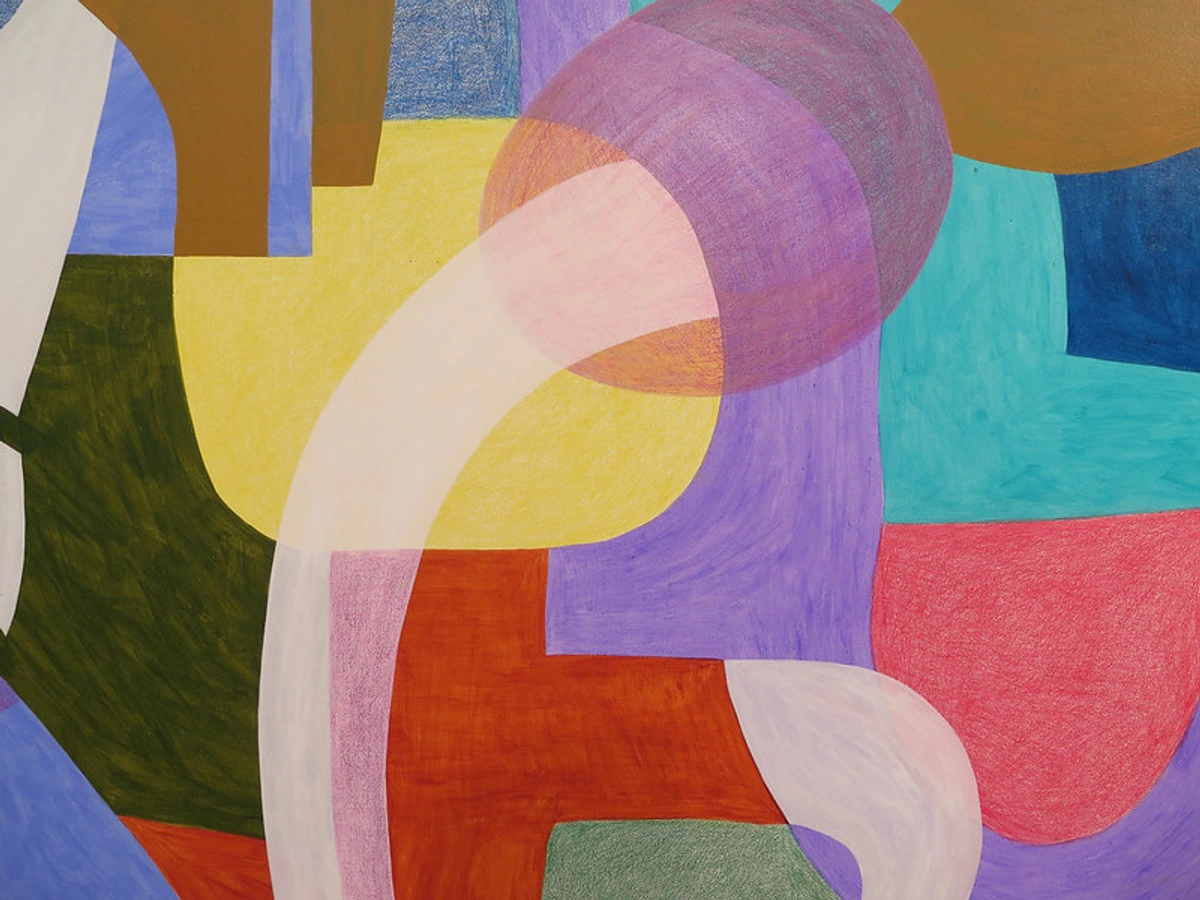
https://www.flickr.com/photos/42803050@N00/31171785864, https://creativecommons.org/licenses/by-nd/2.0/
The Art of the Single Statement Piece
In minimalism, a single, impactful piece can speak volumes. Instead of a gallery wall (which I love, don't get me wrong – the siren call of a perfectly curated cluster of frames is strong!), consider one large abstract painting that dominates a wall. When choosing 'the one,' consider not just personal resonance, but its unique composition, the specific emotional quality it evokes, its visual weight relative to the space, and the wall's prominence – is it the first thing seen upon entering, or a serene backdrop to a main seating area? It creates an undeniable focal point, drawing the eye and anchoring the room. Its visual weight dictates the room's energy, offering a singular powerful statement rather than a collection of smaller narratives. It's a confident, uncluttered declaration of taste, allowing the space around it to breathe. I often think about how a single piece can truly elevate an interior, a concept touched upon in curating your space: how abstract art elevates modern interiors.
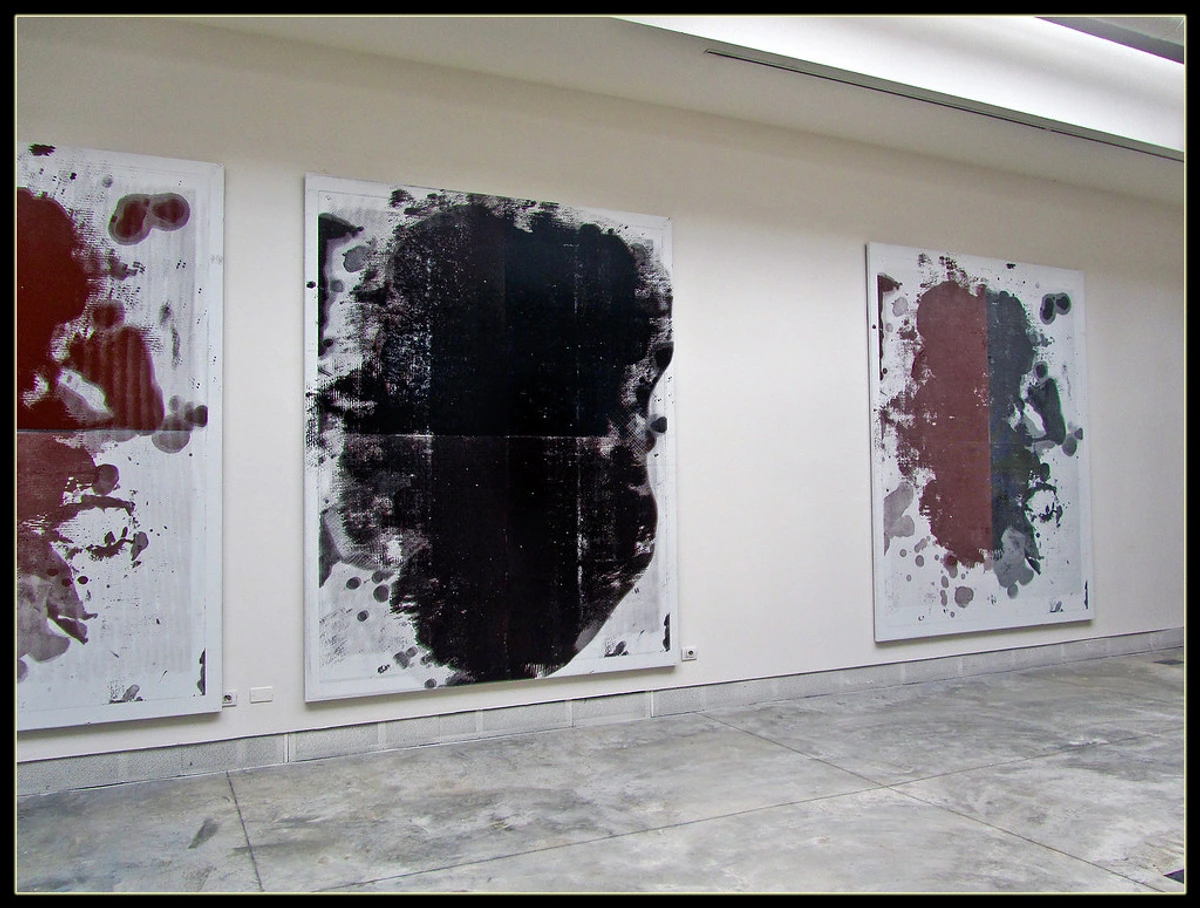
https://live.staticflickr.com/6195/6087778411_164f0d9a2f_b.jpg, https://creativecommons.org/licenses/by-nc-nd/2.0/
Playing with Scale and Space
Don't be afraid of large pieces in seemingly small spaces. A substantial abstract work can actually make a compact room feel grander, extending the visual plane. For instance, a tall, narrow piece can draw the eye upwards, making ceilings feel higher, while a wide, horizontal piece can visually expand a wall, creating a sense of breadth. Understanding a piece's visual weight – how much attention it demands and how 'heavy' it feels visually – is crucial. A large, complex piece might feel heavier than a large, subtle color field, influencing its ideal placement. Conversely, a carefully selected smaller piece can create a charming vignette on a console table or shelf, adding a moment of visual interest without overwhelming. It's all about thoughtful placement and understanding how a piece interacts with its surroundings. For ideas on maximizing impact in smaller areas, check out abstract art for small spaces: maximizing impact in compact areas.
Beyond the Canvas: Abstract Sculpture and Mixed Media
While this article primarily focuses on paintings, remember that abstract art extends beyond the two-dimensional canvas. Abstract sculptures, with their intriguing forms and use of space, can introduce a powerful three-dimensional element to a minimalist room. Similarly, mixed media pieces can add compelling textures and layers without visual clutter. Imagine a sleek, polished metal sculpture catching the light on a low console, or a mixed media piece with subtle fabric textures adding warmth to a stark concrete wall. When considering these forms, look for clean lines, interesting materials, and a sense of visual harmony to ensure they enhance, rather than disrupt, your serene minimalist environment. They can serve as sculptural focal points, inviting closer inspection and adding unexpected depth.
Practical Ponderings for Your Walls
So, you’ve found the piece that speaks to your soul. Now what? Integrating it into your minimalist sanctuary requires a bit of strategic thinking. It's less about rigid rules and more about feeling what’s right, but a few pointers never hurt.
Placement: Finding Its 'Home'
Art, like people, needs to find its home. Usually, eye level is a good starting point for wall-hung art. But in a minimalist space, you might consider unexpected placements: leaning a large piece against a wall on the floor, or using a smaller piece to punctuate a specific corner or reading nook. I once leaned a large, monochromatic piece against a wall in a tiny entryway, and instead of feeling cramped, it surprisingly opened up the space, drawing the eye deeper into the home. I've also, admittedly, tried to squeeze a grand piece into a nook meant for a teacup, and let's just say the art looked less 'statement' and more 'squished.' Think about how the art interacts with the existing furniture and architectural lines. Also, in open-plan minimalist homes, consider sightlines – how the art appears from various vantage points or adjacent rooms, ensuring it enhances the flow of the entire space. It's about creating a dialogue, not just filling a void. For general decorating tips, take a look at how to decorate your home or specifically how to decorate a wall.
Placement Idea | Description | Effect on Space |
|---|---|---|
| Eye Level | Traditional hanging, center of piece at average eye height (around 57-60 inches) | Natural viewing comfort, classic presentation |
| Leaning | Large pieces leaned against a wall, often on the floor or a low surface | Casual, modern, adds depth without commitment |
| Vignette | Smaller pieces integrated into a curated display on a console, shelf, or desk | Creates intimate moments, adds layered interest |
| Unexpected Nook | Placed in a less obvious area like a hallway end or a cozy reading corner | Surprising visual delight, draws attention to overlooked spaces |
Lighting: The Unsung Hero
I can't stress this enough: good lighting can make or break an artwork. In a minimalist setting, where every element is exposed and celebrated, proper lighting ensures your abstract piece truly shines. I’ve seen my own vibrant pieces lose all their magic under dim, yellow light, only to explode with life when bathed in a crisp, clean glow. A subtle picture light, strategically placed spotlights, or even just maximizing natural light can enhance the texture, depth, and color vibrancy of the work. When choosing artificial light, consider color temperature (warm vs. cool light can alter perceived hues) and CRI (Color Rendering Index) – a high CRI ensures colors appear true to life. For artificial light, LEDs are often ideal due to their low heat emission and lack of UV rays, which can damage artwork over time. And always remember to protect your art from direct, unfiltered sunlight to prevent fading. It’s like giving your art its own spotlight on the stage of your home.
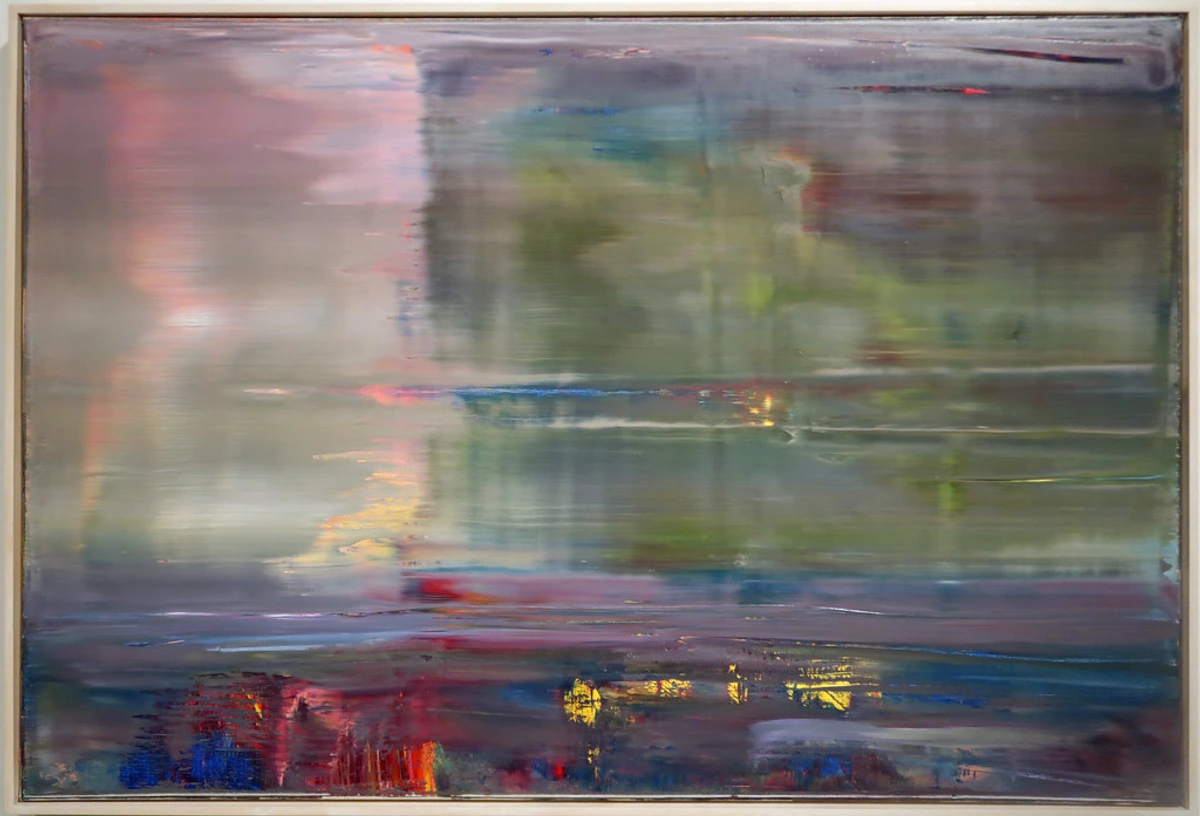
https://live.staticflickr.com/65535/51907566658_1100dbeb2a_b.jpg, https://creativecommons.org/licenses/by-nc-sa/2.0/
Caring for Your Art: Preserving Your Investment
In a minimalist home, where every object holds significance, ensuring the longevity of your abstract art is paramount. Treat your artwork as a cherished investment. Regularly dust with a soft, dry cloth. Avoid placing pieces in direct, unfiltered sunlight or areas with extreme temperature and humidity fluctuations, as these can cause fading, warping, or cracking. For pieces behind glass, use a streak-free cleaner sparingly on the glass, never directly on the artwork itself. For canvases, avoid harsh chemicals. I've learned the hard way that a little preventative care goes a long way – nothing breaks an artist's heart faster than seeing a beloved piece fade from neglect! If your art needs more serious attention, always consult a professional art conservator. Proper care ensures your abstract piece remains a vibrant, soulful focal point for years to come.
Frequently Asked Questions (FAQ)
Got more questions about bringing abstract art into your minimalist haven? You're not alone! Here are some of the most common queries I hear, and my thoughts on them.
Can abstract art really fit any minimalist home?
Yes, absolutely! The beauty of abstract art is its versatility. You can find pieces that echo the serene neutrality of some minimalist designs or others that offer a bold, energetic contrast. It’s all about finding the right piece that speaks to you and complements your specific minimalist aesthetic.
How do I pick the right colors for my minimalist space?
Consider your existing color palette. Do you want the art to blend seamlessly or act as a vibrant focal point? For blending, look for muted tones, subtle gradients, or monochromatic pieces. For a focal point, a single bold color or a dynamic interplay of a few complementary colors works wonders. Think of it as adding a pop of personality to your well-behaved room.
Is it okay to have more than one piece of abstract art in a minimalist setting?
Of course! While a single statement piece is highly effective, you can certainly have multiple pieces. The key is thoughtful placement and ensuring they don't create visual clutter. Consider grouping smaller, complementary pieces or scattering them strategically throughout the space to create different moments of contemplation. Just don't overdo it – remember, your walls need to breathe too!
How should I frame abstract art for a minimalist home?
For minimalist homes, simple and understated frames work best. Floating frames are popular as they create a subtle shadow box effect, making the art appear to float within the frame, which highlights the art itself. Thin, clean-lined frames in neutral colors (black, white, natural wood) or even frameless presentations (like gallery-wrapped canvases or acrylic prints) maintain the uncluttered aesthetic. The goal is to enhance, not distract from, the artwork.
What role does texture play in abstract art for minimalist spaces?
Texture adds incredible depth and tactile interest to a minimalist space without adding visual clutter. In abstract art, texture can be created through impasto, collage, or varied brushwork. A piece with rich, subtle texture can make a monochromatic minimalist room feel incredibly luxurious and inviting, inviting closer inspection and adding a sensory layer. Explore more in the role of texture in abstract art: a sensory exploration.
How do I care for and maintain abstract art in a minimalist home?
Keeping your art pristine in a minimalist home is crucial since every piece stands out. Dust regularly with a soft, dry cloth. Avoid direct sunlight or extreme temperature/humidity fluctuations, as these can damage the artwork. If your piece is under glass, use a streak-free glass cleaner sparingly on the glass, not directly on the art. For canvases, avoid harsh chemicals. When in doubt, consult a professional art conservator.
Are there budget-friendly options for acquiring abstract art?
Absolutely! Original abstract art can be an investment, but there are many accessible options. Look for high-quality giclée prints, explore emerging artists on online platforms, visit local art school sales, or consider commissioning a smaller piece from an artist you admire. Don't shy away from secondhand shops or flea markets; you might stumble upon a hidden gem. The key is to buy what you love, regardless of price tag.
Where can I find original abstract art for my minimalist home?
You can explore local galleries, art fairs, or online platforms. Many artists, like myself, offer original paintings and prints that are perfect for modern interiors. When buying, research the artist, check for authenticity (especially for original pieces), and consider a commission if you have a very specific vision for your minimalist space. Feel free to explore my collection of art for sale – you might just find a piece that truly speaks to your minimalist heart.
Can I integrate abstract sculpture or mixed media into a minimalist home?
Yes, absolutely! While this article primarily focuses on paintings, abstract sculptures or mixed media pieces can add extraordinary three-dimensional interest and tactile depth to a minimalist space. The key is to maintain the minimalist principle: choose pieces with clean lines, interesting forms, and perhaps limited palettes or natural materials to ensure they enhance, rather than disrupt, the serene environment. They can serve as powerful, sculptural focal points.
Should I buy abstract art that matches my decor, or art that I love?
This is a classic dilemma, and my answer is always the same: buy art that you love. While it's tempting to find a piece that perfectly matches your sofa, art is meant to be a soulful connection, not merely a decorative accessory. Your decor can always be adjusted over time to complement a beloved piece of art, but art chosen purely to match often falls flat. Invest in pieces that move you, and your home will naturally feel more authentic and personal.
How do I develop my eye for abstract art if I'm new to it?
Developing an appreciation for abstract art is a journey! Start by visiting local galleries, museums, and online exhibitions. Don't try to understand every piece immediately; instead, focus on what evokes an emotional response. Pay attention to colors, shapes, and textures. Read about artists and movements that intrigue you, and allow your personal taste to evolve. The more you engage with abstract art, the more it will reveal itself to you. It's about opening your mind and heart.
Your Minimalist Home, Reimagined by Art
Bringing abstract art into your minimalist home isn't about filling empty spaces; it's about enriching them with meaning and emotion. It's about making a quiet statement, adding soul and personality without a single ounce of clutter. From the deliberate choice of color to the strategic placement of a single, powerful piece, every decision contributes to a sanctuary that feels both serene and deeply personal. May your walls breathe with the quiet confidence of art that truly speaks to you, transforming your house into a home that is uniquely, soulfully yours.




